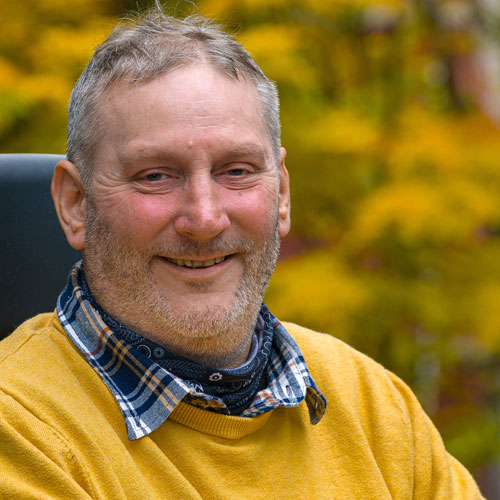Introduction: The Journey to Positive Thinking
Learning how to think positive is simpler than you may think, but also quite difficult to do because of the habits we have formed in our lives. It’s also of great benefit to have a negative bias in order to protect ourselves. It is these instincts and habits that we are up against in what might feel like a constant battle to have more positive thoughts.
Life often feels like a complex maze, where each turn brings its own set of challenges and emotions. At times, these paths lead us into shadows, where our thoughts seem to turn against us, becoming our greatest adversaries. This journey I’m about to share is not just mine; it reflects a universal struggle and, more importantly, a path to understanding and harnessing the power of our minds.
Understanding the Mind’s Landscape
Imagine your mind as a vast, bustling train station. Trains, representing our thoughts, constantly arrive and depart. We often believe we’re the stationmasters, in control of these trains. But in truth, we’re mere observers, watching these trains of thoughts chug in and out. The key lies not in stopping these trains but in choosing which ones to board and which ones to let pass.
In this narrative, I’ll share my personal journey – a journey from the depths of despair to the enlightening realization of how we can ‘rewire’ our minds. It’s a tale of struggle, insight, and eventual transformation, providing a roadmap for anyone seeking to navigate their own mental landscapes.

The Dark Night of the Soul
Confronting the Storm of Thoughts
There comes a time in life, often unexpected, when everything we’ve known seems to crumble around us. For me, this period was a profound ‘Dark Night of the Soul,’ a term that aptly describes the intense and often terrifying journey into the depths of oneself. It was during this phase that my life felt like it was falling apart, leaving me in a state of despair so deep that even existence seemed questionable.
Struggling with the abrupt end of a significant relationship, my mind became a battleground of relentless negative thoughts. Questions like “Why did they leave?” and self-doubt such as “Am I not desirable?” haunted me day and night. These thoughts were not just passing clouds in my mental sky; they were raging storms that refused to clear.
The pain was palpable, each thought like a dagger piercing through any semblance of peace or sanity I had left. Paralyzed by this mental turmoil, my body responded in kind, curling up, as if to protect itself from the onslaught of my own thoughts. The negativity was a vicious cycle, feeding into itself, growing more intense with each passing moment.
In this dark phase, I experienced moments of eerie silence within my mind, an unsettling blankness that was as confusing as it was distressing. But as I gradually emerged from this abyss, a realization dawned upon me. The thoughts that I believed were my tormentors were not entirely under my control, but my reaction to them was.
This period marked the beginning of my transformation. It taught me a crucial lesson: while we cannot always control the thoughts that enter our minds, we have the power to choose which ones to engage with. This understanding became a cornerstone in my journey towards positive thinking and emotional resilience.
Observing the Thought Trains
The Power of Mindful Observation
As I began to emerge from the darkest phase of my life, a vital insight started to take root. It was about understanding the nature of thoughts and how they influence our well-being. This insight was simple yet profound: our thoughts are like trains at a station, and we are the observers on the platform.
Initially, in the midst of emotional turmoil, my mind resembled a chaotic train station, where trains of thought would arrive and depart without any semblance of order. Negative thoughts, especially those stemming from the breakup, would arrive like express trains, dominating the platform with their noise and urgency.
Struggling with the pain and confusion, I realized that trying to stop these trains was futile. Instead, I began to practice the art of observation. I visualized myself standing on the platform of my mind, watching these trains of thought arrive and leave. Some were laden with pain and regret, others with self-doubt and fear. However, instead of boarding these trains, I chose to observe them.
This practice of mindful observation was not easy. It required patience and perseverance. But as I continued, something remarkable happened. The negative trains started losing their power. They would arrive with less frequency and intensity. By choosing not to board them, I was signaling to my mind which thoughts were unwelcome.
This shift was a turning point. It allowed me to understand that while I couldn’t control the arrival of thoughts, I had the power to decide which ones to engage with. This realization was empowering. It was a step towards mental freedom and positivity.
Choosing Your Train: A Conscious Decision
Steering Away from Negative Tracks
The journey of rewiring our minds to think positively involves a pivotal moment: the conscious decision to choose our thoughts, much like deciding which train to board at a station. This choice, simple in theory, is profound in practice. It’s about exercising our mental agency, recognizing that while we can’t control every thought that enters our minds, we can decide which ones to engage with.
During my recovery, as I became more adept at observing my thoughts, I faced a new challenge: choosing which thoughts to follow. This was not about suppressing the negative or forcibly trying to be positive. It was about understanding that thoughts, both positive and negative, have their place and purpose.
The key lies in discernment. For instance, when thoughts about my past relationship emerged, laden with pain and regret, I acknowledged them. However, instead of boarding these trains of thought and letting them take me on a painful journey, I chose to let them pass. This choice was not about denial; it was about recognizing that dwelling on these thoughts would not serve my healing or growth.
The act of choosing is empowering. It shifts the dynamics from being a passive recipient of thoughts to an active participant in our mental well-being. Each time we choose not to engage with a negative thought, we strengthen our mental resilience and foster a more positive mindset.
Reprogramming the Subconscious Mind
Cultivating Positive Mental Pathways
When it comes to understanding ‘how to think positive’, it’s not as straightforward as simply converting negative thoughts into positive ones. A significant part of this process involves accepting the way the mind functions and recognizing why it’s beneficial for the mind to operate in that manner. With this perspective, we’re not battling as much to dispel negative thoughts, particularly when we cease to perceive them as detrimental.
The process of rewiring our minds to think positively is intricately linked to how we interact with our subconscious mind. This part of our mind, vast and often mysterious, plays a critical role in the formation of our thought patterns. It’s akin to a garden; the seeds we plant and nurture determine the nature of what grows.
In my journey, understanding the role of the subconscious was crucial. I learned that the subconscious doesn’t discriminate between positive and negative thoughts. It simply responds to what we focus on most frequently and intensely. This realization was a game changer. It meant that by consistently choosing positive thoughts, or at least neutral ones, I could influence what my subconscious mind presented to me.
This reprogramming doesn’t happen overnight. It requires persistence and patience. Each time I chose not to board a negative thought train, I was essentially planting a seed of positivity in my subconscious. Over time, these seeds grew, and the landscape of my mind began to change. The negative trains didn’t vanish, but they became less frequent and less compelling.
Moreover, this shift wasn’t just about reducing negativity. It was about creating a space for positive thoughts to flourish. By focusing on thoughts that evoked feelings of gratitude, hope, and resilience, I was nurturing my subconscious garden with positivity. This shift had a profound impact on my overall mental health and outlook on life.
Conclusion: Mastering Thoughtful Navigation
Embracing the Power Within
As we conclude this journey of ‘Rewiring Your Mind to Think Positive,’ it’s essential to reflect on the profound power we hold within ourselves. The journey is not about eliminating negative thoughts entirely but about mastering the art of thoughtful navigation. It’s about recognizing that while we may not control the trains of thought that arrive at our mental station, we have the autonomy to choose which ones to board.
This journey has taught me that the essence of positive thinking lies in understanding and cooperation with our mind’s mechanics. It’s about developing a harmonious relationship with our thoughts, acknowledging their presence, but not letting them dictate our emotional state.
The metaphor of the train station serves as a powerful reminder of our role as observers and choosers. Just as a traveler at a station decides their destination, we too can choose the direction of our mental journey. This choice is our power, and with it comes the freedom to steer our lives towards positivity, growth, and well-being.
As you reflect on this narrative, consider your own mental train station. Observe the trains of thought that arrive and ask yourself, “Is this a train I want to board?” Remember, every decision to let a negative thought pass and to embrace a positive one is a step towards rewiring your mind for a more positive, empowered life.Yeah I hear you
Reflect on a recent moment when a ‘train’ of negative thought arrived at your mental station. How did you respond, and how might your experience change if you consciously choose which thoughts to board next time?
More on How to Think Positive
Here are a few more articles I have wrote and video from my Stillness in the Storms Podcast on how to think positive.
Grateful and Positive Start to Your Day: 14 Min Morning Meditation
Why doesn’t thinking positive work?

FAQ: Cultivating Positive Thinking Through Eastern-Inspired Wisdom
- How Can I Begin to Cultivate a Positive Mindset? Start by embracing the present moment. Focus on the here and now, and try to let go of worries about the past or future. This mindfulness can create a foundation for positive thinking.
- What Role Does Nature Play in Positive Thinking? Nature is a powerful ally in fostering positivity. Spend time in natural settings, observing the simplicity and beauty around you. This can help you connect with a sense of peace and positivity.
- How Can I Handle Negative Thoughts Effectively? Acknowledge negative thoughts without judgment, and then gently redirect your focus to positive aspects. It’s about recognizing these thoughts as fleeting, like clouds passing in the sky.
- Can Breathing Techniques Help in Positive Thinking? Absolutely. Deep, mindful breathing can center your mind and reduce stress, creating a more positive mental state. Practice regular, focused breathing to cultivate calmness and positivity.
- What Daily Practice Can Help Maintain a Positive Outlook? Incorporate a daily practice of gratitude. Reflect on things, big or small, that you’re grateful for. This habit can shift your focus from what’s lacking to the abundance in your life, fostering positivity.

